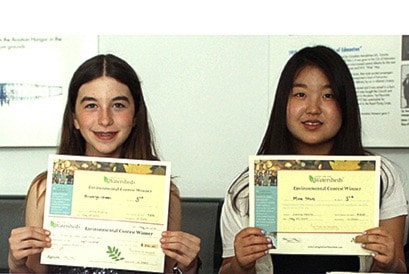Two Grade 8 St. Augustine Catholic School students placed third in the Caring for Our Watersheds competition with their project that mixed environmental stewardship with their passion for golf.
Although the girls are not taking home the first place prize of $10,000, they may still be eligible for a portion of that amount as the contest places a great focus on supporting students who wish to implement their projects into their communities.
Nathalie Stanley Olson, education and outreach co-ordinator for the Battle River Watershed Alliance says there have been years when portions of the sponsorship money had gone to different groups competing agaisnt each other because the students wanted to make their proposals a reality.
As third place winners the girls take home $400 each and $800 is given to their school.
The top 10 projects were presented at the contest finals on Saturday, May 23 at the Reynolds Museum in Wetaskiwin.
Brooklyn Green and Mina Shin proposed birdhouses placed on golf courses would lower the use of pesticide in the Battle River Watershed.
The idea started out as a school project and the two girls had been working on their project since January.
At the finals each group was required to give a short presentation on their project proposal.
“It was a very close race,” said Olson.
“I think, for both of us, we feel pretty proud of ourselves,” said Shin. In early spring, when the girls found out they had made the top 10 they were surprised that their proposal could compete with the Grade 12 students of the Battle River Watershed, which stretches from Fort McMurray to Lethbridge.
It was a record-breaking year, as the competition received more than 150 proposals from approximately 300 students.
From their project, the girls learned the importance of caring for the watershed, especially as the province’s up and coming generation. “In 50 years, we’re going to be the older generation,” said Shin.
“It revolves around everything we have to work with,” Green added, referring to the health of the watershed.
Shin says she has learned to be more aware of her surroundings since taking on the project.
Because the Battle River Watershed covers such a large land area, Olson says there was a great diversity in the projects this year as each community faces different challenges.
“When we’re talking about how to protect the watershed it’s so much more than water,” Olson explained.
“It was really interesting and exciting to see the students taking on old problems . . . it’s an age old problem but coming up with new solutions,” she added.
She feels the students who partake in the competition begin to see their communities in a different light and having the support of their recognition will increase their confidence when it comes to believing they can incite change.
